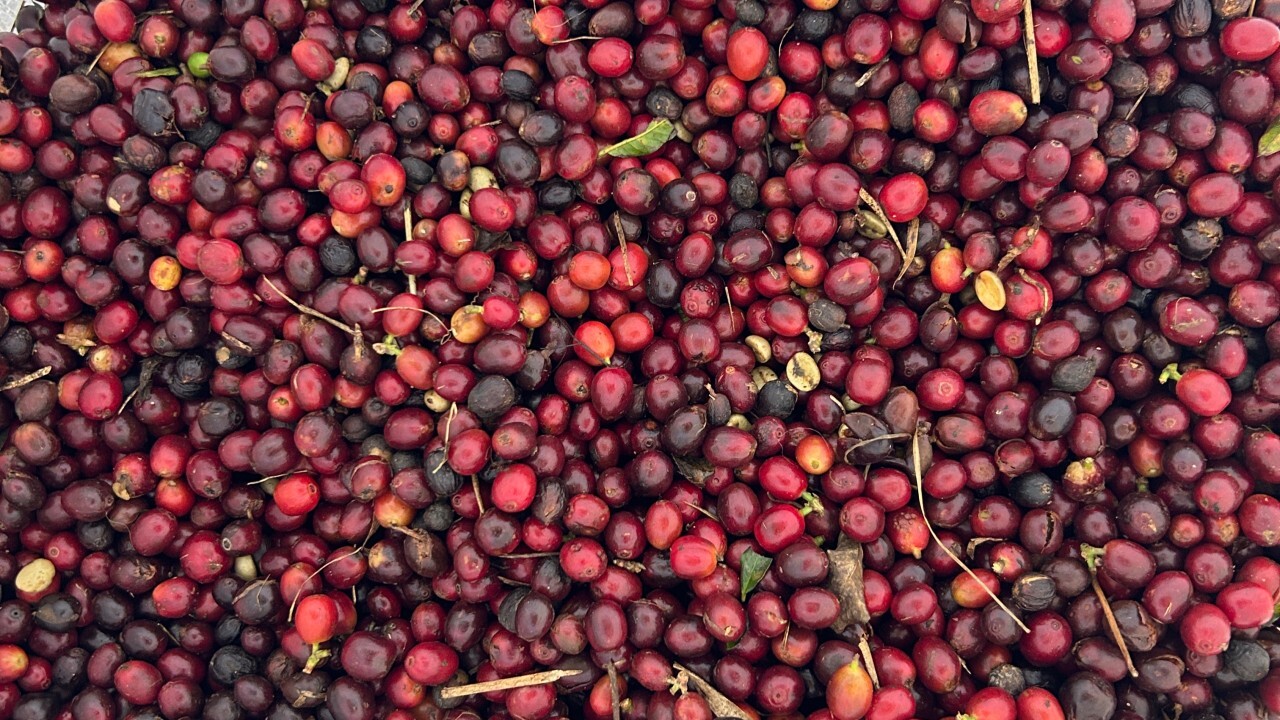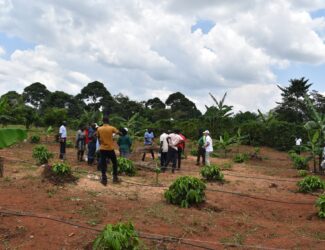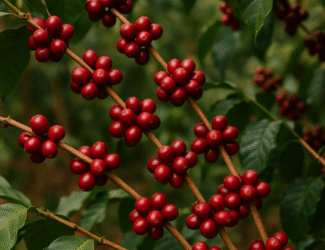
The Molecules Between Worlds: How Sugars and Acids Travel Through Coffee Beans
By Dr. Steffen Schwarz | Coffee Consulate – Applied Coffee Science
Deep within Colombia’s lush coffee-growing regions—where humid air mingles with volcanic soil and the aroma of ripe coffee cherries—an invisible transformation unfolds inside each bean. It’s not just fermentation shaping the taste of your morning brew; it’s a microscopic migration of acids and sugars that redefines our understanding of flavor development in coffee.
Recent research led by scientists at Cenicafé and the University of Caldas has uncovered a crucial mechanism behind coffee’s flavor complexity: the diffusion of organic compounds from the mucilage (a sticky, sugar-rich layer surrounding the bean) into the bean’s endosperm during fermentation. This process goes far beyond surface interaction—it’s a journey of molecules, altering the coffee from the inside out.
The study focused on the Castillo variety of Coffea arabica grown in Chinchiná, in the Colombian Andes. Researchers exposed cherries at three stages of ripeness to extended fermentation under tightly controlled conditions. Using advanced carbon isotope tracing, they monitored how compounds such as citric, malic, quinic, tartaric, acetic, and lactic acids—along with sugars like glucose, fructose, and sucrose—moved from the mucilage into the beans.
The findings were striking. While citric, malic, and quinic acids remained relatively stable within the bean, the levels of tartaric and acetic acids increased significantly with time. This confirmed that these acids weren’t just produced externally—they diffused into the bean during fermentation.
This reveals a critical but often overlooked mechanism in coffee processing: mass transfer by diffusion. Unlike mixing or stirring, this is a silent chemical process, occurring under solid-state fermentation conditions—without agitation, without convection, but driven by gradients in chemical potential.
Understanding this migration could transform how producers manage fermentation. For instance, acetic acid adds brightness in small amounts but can overpower a cup if excessive. Tartaric acid, known for its sharp grape-like flavor, can similarly be used to modulate taste. Meanwhile, while most sugars are metabolized by microbes during fermentation, their byproducts leave flavor footprints in the bean.
Temperature and fermentation time are key to this delicate process. Lower temperatures slow down diffusion—much like syrup thickening in a cold room—while higher temperatures speed it up but can also accelerate microbial instability. This balance between physical chemistry and microbiology is crucial to refining cup quality.
These insights shift the narrative of coffee processing. Fermentation is no longer merely an external microbial event—it is a chemical conversation between the bean and its surrounding mucilage. For producers, roasters, and baristas, understanding this internal transformation offers new tools for controlling flavor development with precision.
Because every remarkable cup of coffee doesn’t begin at the roastery—it begins with thousands of invisible steps, many of which happen deep inside the bean.
Scientific References:
-
Osorio, V., Medina, R., Acuña, J.R., Pabón, J., Álvarez, C.I., Matallana, L.G., & Fernández-Alduenda, M.R. (2023). Transformation of organic acids and sugars in the mucilage and coffee beans during prolonged fermentation. Journal of Food Composition and Analysis, 123, 105551. https://doi.org/10.1016/j.jfca.2023.105551
-
Kregiel, D., Dziekonska-Kubczak, U., Czarnecka-Chrebelska, K., & Pielech-Przybylska, K. (2025). Chemical Fingerprints of Honey Fermented by Conventional and Non-Conventional Yeasts. Molecules, 30, 2319. https://doi.org/10.3390/molecules30112319



